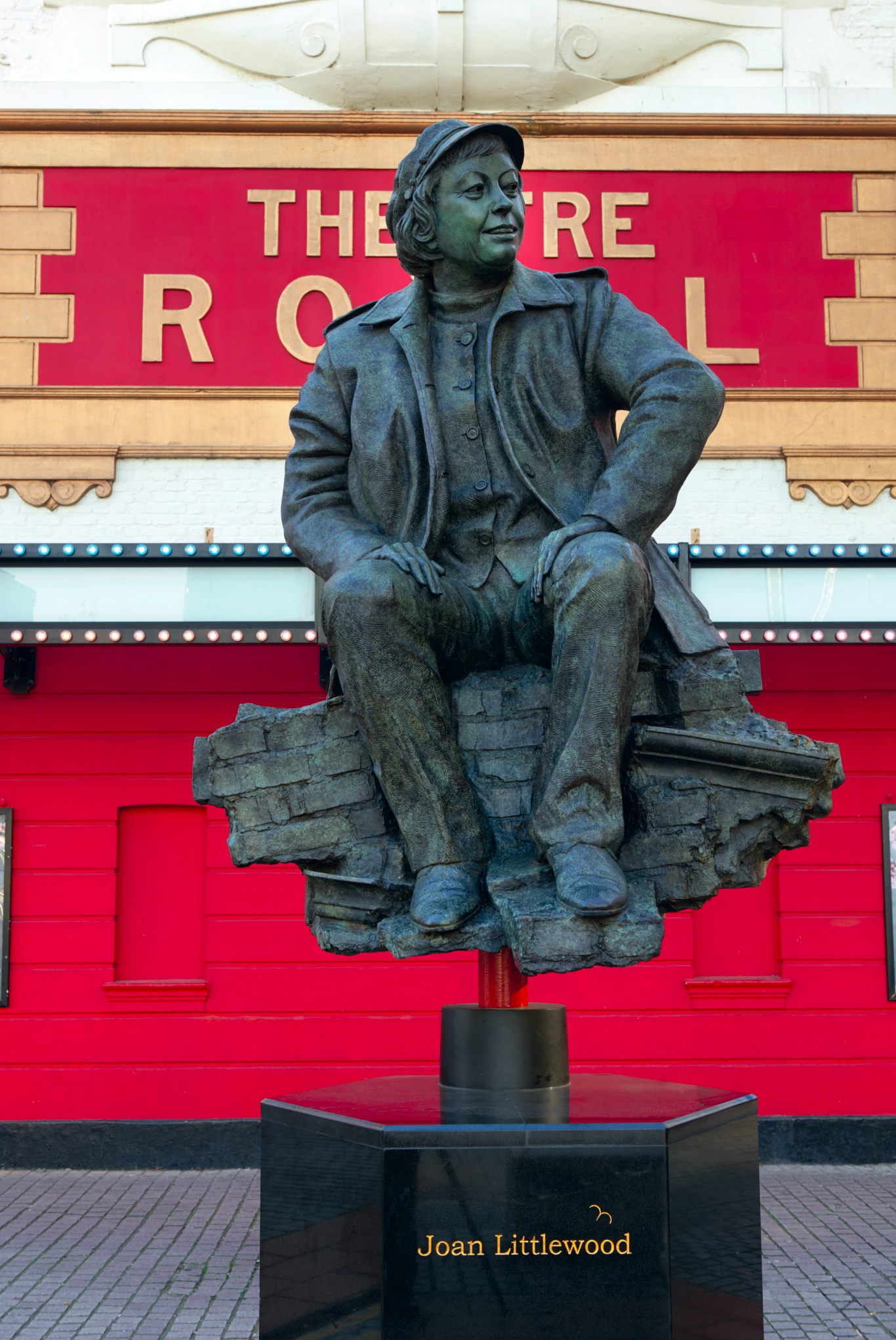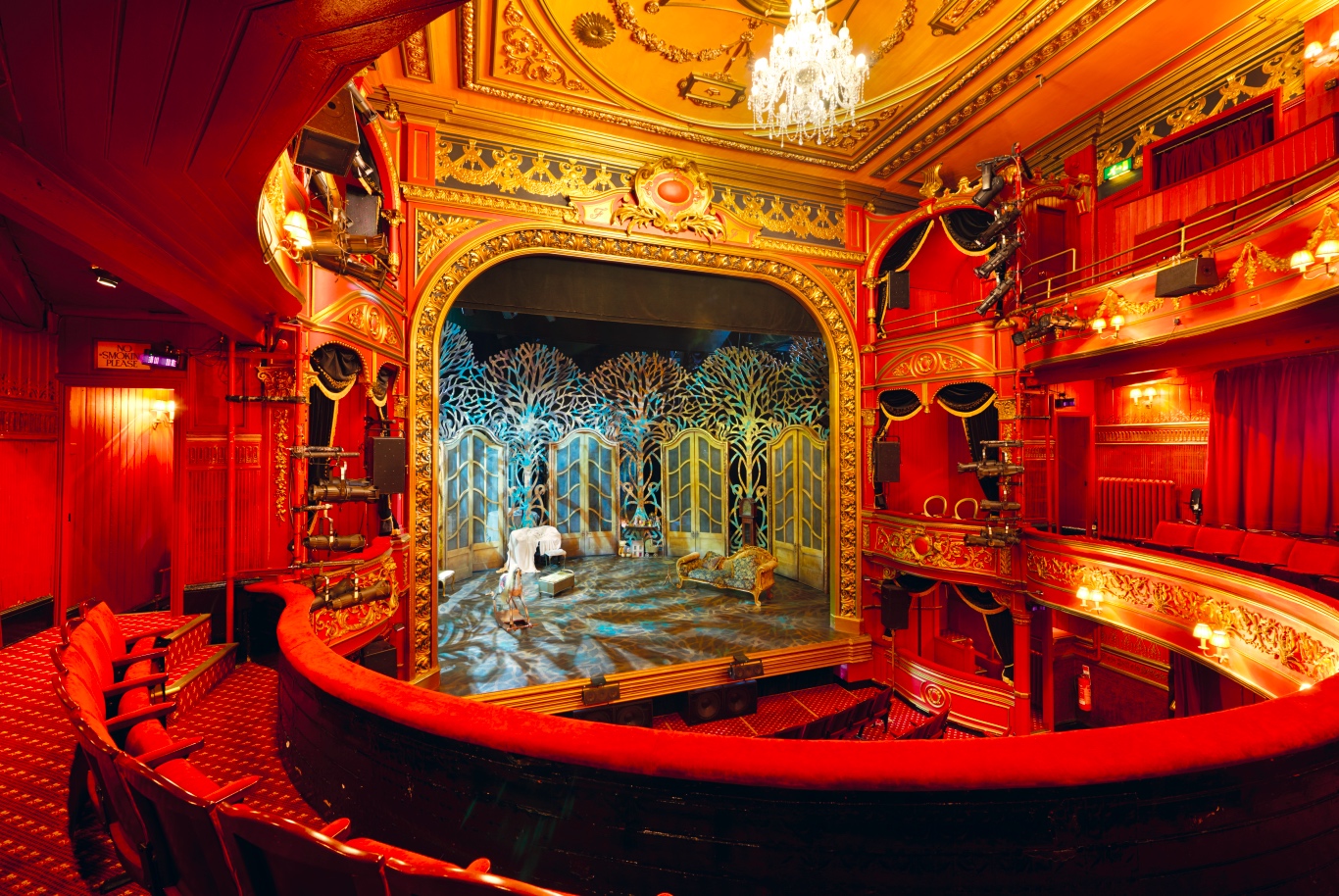
Several years before she finally threw in the towel in 1979 and retired to France, the director Joan Littlewood posed for a photograph on a pile of rubble outside the Theatre Royal, Stratford East. She was still hoping to launch a Fun Palace and had staged a series of improvisatory events on this wasteland.
The plain but imposing facade of the Victorian theatre where she produced a series of world-famous productions between 1958 (A Taste of Honey) and 1963 (Oh, What a Lovely War!) is a backdrop to her irrepressible cheek and belief in the value of popular entertainment in a deprived community.

Littlewood, hailed by Peter Brook as ‘the most galvanising director in mid twentieth-century Britain’, died in 2002, but that photograph is mummified in the bronze statue by Philip Jackson now standing a few feet from the theatre.
The Theatre Royal sits now on the fringe of the Olympic Park and a regenerated area of the East End of London subsequent to the Olympic Games of 2012. In its immediate vicinity it remains a beacon of vivacity and optimism in what is glumly designated a ‘theatre quarter’ – there’s a shiny new arts centre, Stratford Circus, immediately next door (since 2001) and, where rubble once piled high after the area was razed to the ground in the late 1960s, there’s a busy segment of the University of East London and a Stratford Picturehouse cinema built over a large Pizza Express.
LOCAL ADVERTISING

The entrance, now as then, is to the right of the building. A need for more space led, in 1891, to the acquisition of a fish shop on Angel Lane, and its garden; the effect was to create a long ramp of a foyer running alongside the auditorium, leading to the bar at the back, which veers off again at right angles.
That far exit (an outside entrance back into the long bar) was the front of the fish shop, and the garden, walking back right through to the end of the bar, is now the back half of the stage; the stage’s depth went from 18 feet deep to its present 38 feet, one of the deepest in London.

